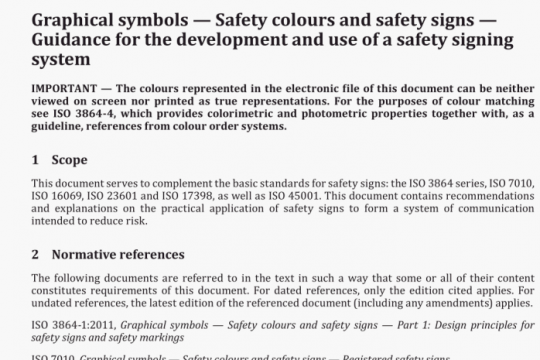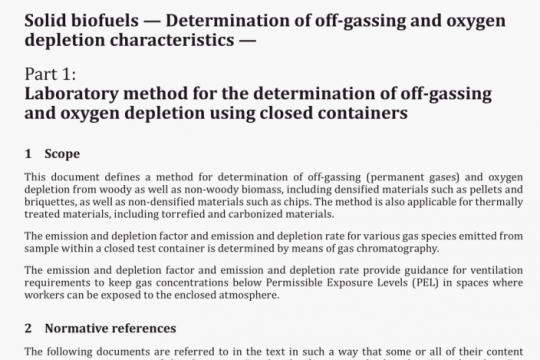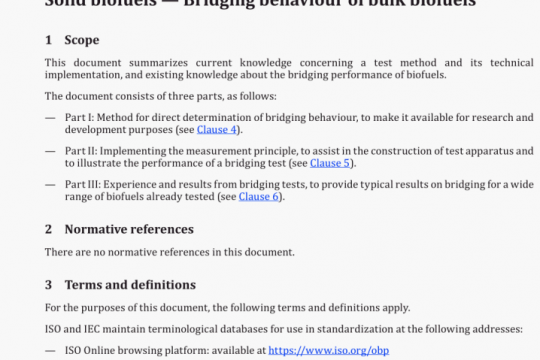ISO 2692 pdf free download
ISO 2692-2021 pdf free download.Geometrical product specifications [GPS)一Geometrical tolerancing – Maximum material requirement (MMR), least material requirement (LMR) and reciprocity requirement (RPR).
This document defines the maximum material requirement (MMR), the least material requirement (LMR) and the reciprocity requirement (RPR). These requirements can only be applied to linear features of size of cylindrical type or two parallel opposite planes type.
These requirements are often used to control specific functions of workpieces where size and geometry are interdependent, for example to fulfil the functions assembly of part? (for MMR) or minimum wall thickness’ (for LMR). However, the MMR and LMR can also be used to fulfil other functional design requirements.
2 Normative references
The following documents are referred to in the text in such a way that some or all of their content constitutes requirements of this document. For dated references, only the edition cited applies. For undated references, the latest edition of the referenced document (including any amendments) applies.
Iso 1101:2017, Geometrical product specijications (GPS) — Geometrical tolerancing — Tolerances ofform orientation, location and run-out
ISO 5458, Geometrical product specifications (GPS) — Geometrical tolerancing — Pattern and combined geometrical specification
ISO 5459:2011, Geomet rical product specifications (GPS) — Geometrical tolerancing — Datums and datum systems
ISO 14405-1, Geometrical product specifications (GPS) — Dimensional tolerancing — Part 1: Linear sizes
ISO 17450-1:2011, Geometrical product specifications (GPS) — General concepts — Part 1: Model for geometrical specification and verification
ISO 17450-3, Geometrical product specifications (GPS) — General concepts — Part 3: Toleranced features
3 Terms and definitions
For the purposes of this document, the terms and definitions given in ISO 5459, ISO 14405-1, ISO 17450-1 and ISO 17450-3 and the following apply.
ISO and IEC maintain terminological databases for use in standardization at the following addresses:
— ISO Online browsing platform: available at https://www .org/obp
— I EC Elect roped ia: available at http://www.electroped ia.orgJ
3.1 integral feature
geometrical feature belonging to the real surface of the workpiece or to a surface model
Note 1 to entry: An integral feature is intrinsically defined, for example skin of the workpiece.
rights reserved
ISO 2692:2021(E)
[SOURCE: ISO 17450-1:2011, 3.3.5, modified — Notes 2 and 3 to entry removed.]
3.2 feature of linear size
geometrical feature, having one or more intrinsic characteristics, only one of which may be considered as variable parameter, that additionally is a member of a “one parameter famiIy, and obeys the monotonic containment property for that parameter
EXAMPLE 1 A single cylindrical hole or shaft is a feature of linear size. Its linear size is its diameter.
EXAMPLE 2 Two parallel opposite plane surfaces are a feature of linear size. Their linear size is the distance between the two parallel opposite planes.
[SOURCE: ISO 17450-1:2011, 3.3.1.5.1, modified — Notes to entry removed; EXAMPLE 2 replaced.]
3.3 derived feature
geometrical feature, which does not exist physically on the real surface of the workpiece and which is not natively a nominal integral feature (11)
Note 1 to entry: A derived feature can be established from a nominal integral surface, an associated integral surface or an extracted integral surface. It is qualified respectively as a nominal derived feature, an associated derived feature or an extracted derived feature.
Note 2 to entry: The centre point, the median line and the median surface defined from one or more integral features (11) are types of derived features.
EXAMPLE 1 The median line of a cylinder is a derived feature obtained from the cylindrical surface, which is an integralfeature (3.,.j). The axis of the nominal cylinder Is a nominal derived feature.
EXAMPLE 2 The median surface of two parallel opposite planes is a derived feature obtained from the two parallel opposite planes, which constitute an integral feature (11). The median plane of the nominal two parallel opposite planes is a nominal derived feature.
[SOURCE: 150 17450-1:20 11, 3.3.6, modified.I
3.4 maximum material size
MMS
<external feature of linear size> value equal to the upper limit of size (ULS) or to the largest ULS in case of multiple size specifications
Note Ito entry: An MMS can be defined for any of the size characteristics in ISO 14405-1. Note 2 to entry: ULS is defined in ISO 14405-1.
3.5 maximum material size
MMS
<internal feature of linear size> value equal to the lower limit of size (LLS) or to the smallest LLS in case of multiple size specifications
Note 1 to entry: An MMS can be defined for any of the size characteristics in ISO 14405-1. Note 2 to entry: LLS Is defined in ISO 14405-1.
3.6 least material size
LMS
<external feature of linear size> value equal to LLS or to the smallest LLS in case of multiple size specifications
Note ito entry: An LMS can be defined for any of the size characteristics in ISO 14405-1.ISO 2692 pdf download.




